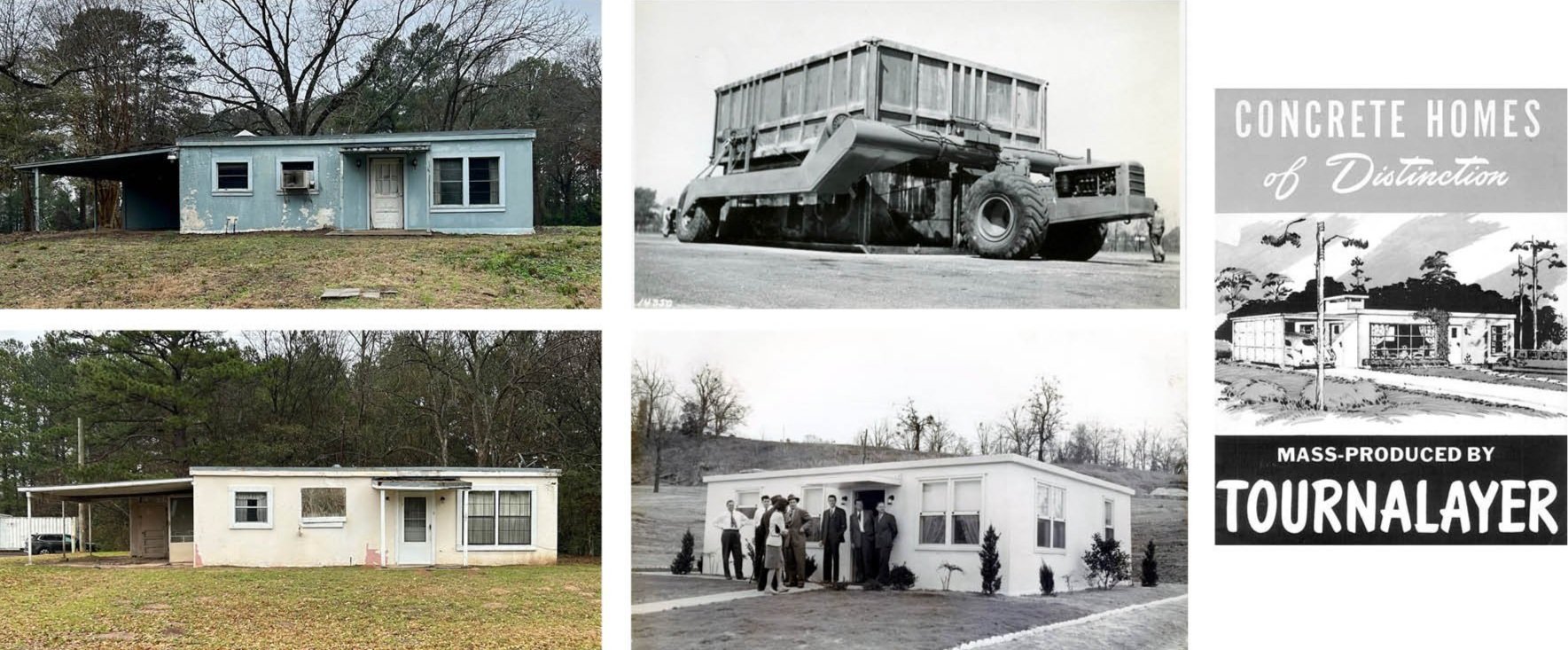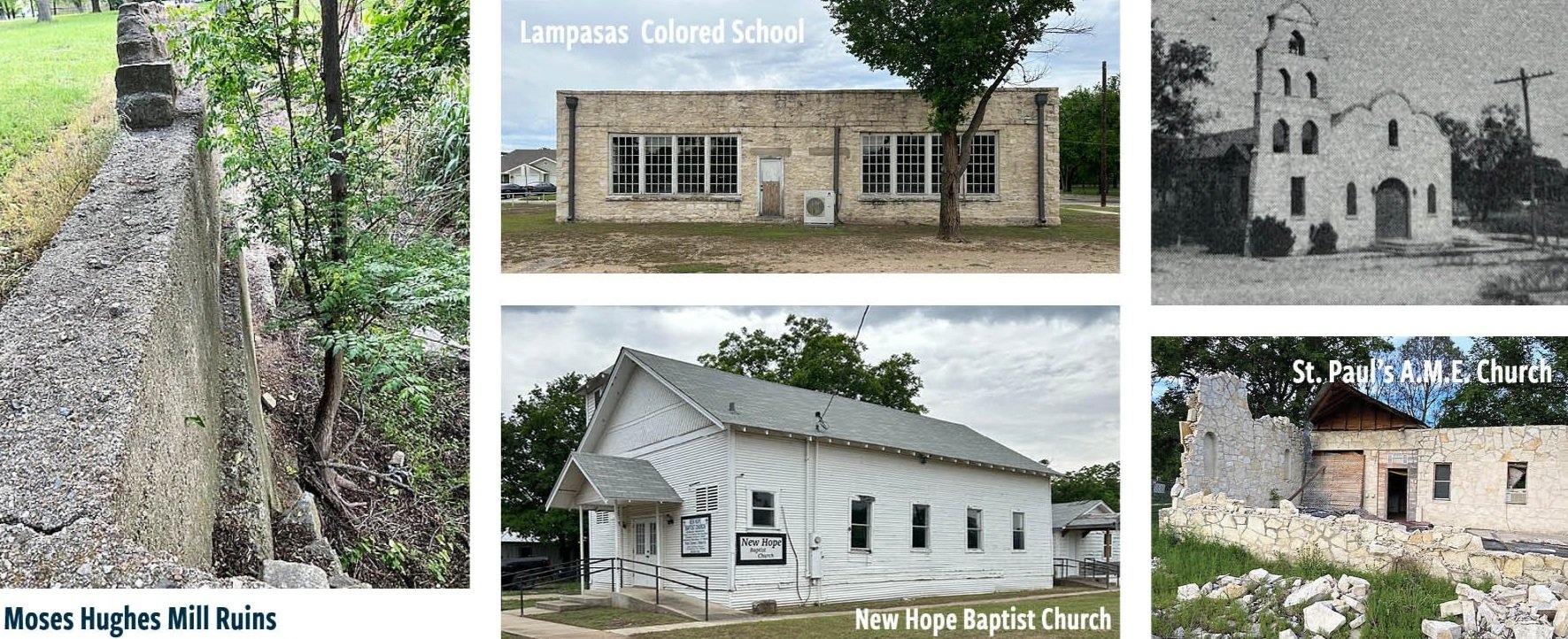Preservation Texas Announces the 2023 List of Texas’s Most Endangered Places
MINERAL WELLS, Texas – Preservation Texas announced its annual list of Texas’s Most Endangered Places on May 11, 2023 at the North Central Texas Regional Preservation Summit in Mineral Wells. This year’s list stretches across the state from El Paso to Beaumont and from Mission to Amarillo, and includes a diverse array of sites in both urban and rural communities.
Preservation Texas supports sites on its Most Endangered Places list by providing advocacy support, publicity, connections to professional resources and assistance in fostering and building community partnerships. The nine sites included on the 2023 list of Texas’s Most Endangered Places join a growing list that began in 2004, all of which merit the investment of time and resources necessary to save them. Of the more than 150 individual sites that have been included on the list over the last 19 years, only 14, or 9%, have been lost.
“Each site represents a chance to reinvest in our historic communities to ensure that irreplaceable landmarks can continue to contribute to the richness of our culture and to the economic vitality of our state,” said Preservation Texas Executive Director Evan Thompson. “In the months and years ahead, progress will be made, and we look forward to a future where each one of these sites are protected, productive, and restored to their proper place as tangible reminders of our irreplaceable Texas heritage.”
The complete list of nine sites included on the 2023 Texas’s Most Endangered Places List follows (in alphabetical order by county):
ST. JOHN COLONY
Near Dale (Caldwell County)
St. John Freedom Colony was established in the 1870’s by a group of fourteen freedman families who came to the area to escape racial violence and establish a community. At its height in the 1910s, St. John Colony included more than 2,200 acres owned and farmed by members of the community, family homes, stores, a cotton gin, grist mill and a post office. The two-room schoolhouse, built in 1906, still stands today. Also remaining are two churches, St. John Landmark and Zion Union Baptist, and St John’s Colony Cemetery where hundreds of community ancestors are buried. A sharp decline in population over the last fifty years has left the community without the manpower or resources needed to maintain the collection of historic buildings and sites at St John Colony. As a result, the buildings are undergoing demolition by neglect, and the cultural landscape is threatened by encroachment from Austin suburban development. In addition to the funding and technical expertise required to arrest the deterioration of the historic buildings on the site, a serious research effort is needed at St John to document and explore the cultural landscape of this significant Texas freedom colony before it is lost forever.
DELEON DEPOT
280 North Texas Street, DeLeon (Comanche County)
Established in 1881 as a stop along the Texas Central Railroad, the first town lots in DeLeon were sold by an auction conducted from a train flatcar. The depot has always been the economic heartbeat of the town, and when the original depot burned in 1918, the present building replaced it that same year. At two hundred feet long, it is one of the longest wood frame depots still standing in Texas, but it has been neglected since it was shuttered by the railroad in 1968. The structure, which is currently owned by the city and leased by the DeLeon Area Historical Society, is in an advanced state of deterioration due to water infiltration and a lack of regular maintenance. The Historical Society has already begun rehabilitating the depot with the goal of utilizing it as a museum, but they lack the funding necessary to continue the project.
EL PASO COUNTY COLISEUM
4100 E. Paisano Drive, El Paso (El Paso County)
The El Paso County Coliseum was built in 1942, and while it was originally intended for rodeos and livestock shows, it initially served as a detention center for captured Italian POWs during WWII. Beginning in the early 1950s, the building served as a processing center for Braceros, and was also utilized as a stage for local civil rights movements. In 1972, the Coliseum was the main meeting place for La Raza Unida Party Convention, led by some of the most prominent Chicano civil rights leaders in the country including Corky Gonzáles, Reies Lopez Tijerina, and José Angel Gutiérrez. Although the building is currently being used for concerts, sporting events, and cultural performances, there are plans to demolish it to make way for the federally-funded Bridge of the America’s expansion project. Increased public awareness about the historical significance of the building, and education about the Section 106 consulting process, is needed to bolster efforts to oppose any government plans to demolish the building.
THE TOURNALAID HOMES
2616 & 2620 MacArthur Street, Longview (Gregg County)
During the mid-century prefabricated housing boom, the industrial manufacturer R.G. LeTourneau invented the Tournalayer, a machine which could produce a concrete “house-in-a-day”. Initially used to create modernist housing for his employees, LeTourneau’s machine was later marketed and used all over the world. Construction of a Tournalaid neighborhood began in 1946 in Longview, making it the second Tournalaid community to be built, following the construction of a community in Vicksburg, Mississippi in the early 1940s. Today, all of the Tournalaid buildings in Vicksburg have been demolished or significantly altered, and these two homes in Longview are all that remains of the eighty homes that once formed a neighborhood on the southern end of the old LeTourneau Industries Plant. These last two Longview Tournalaid houses are currently owned by Komatsu and are scheduled to be destroyed in early 2024 as part of the company’s plans to expand and develop the site. Efforts by the Machine-Built Architecture Conservancy are currently underway to permanently relocate these two buildings to a nearby site, but the outcome is far from certain. The plight of these last two Longview Tournalaid homes needs to be broadcast to a statewide audience to cultivate opportunities for the funding and support needed to save these buildings from demolition.
COURTNEY & ST. HOLLAND’S SCHOOLS
16263 6th Street, Navasota (Grimes County)
The two-story brick school building in Courtney was completed in 1913 during a period of economic prosperity in the area spurred by cotton that was cultivated throughout the fertile Brazos River bottomlands. When Navasota ISD consolidated in the 1950s, the White students at Courtney School transferred to schools in Navasota, and the Courtney School building became the area’s Black school until the school district was integrated in 1966. Sometime during that period, the St. Holland’s School building was moved to the site where it served as the cafeteria for the Courtney School. The St. Holland’s school building still stands separate but next to the two story 1913 school building and, until recently, was used as a community room and Grimes County precinct voting station. The Courtney School building, which is thought to be the oldest school still standing in Grimes County, has been largely vacant over the last sixty years. Broken windows, a leaking roof, and structural damage have left the building in serious disrepair. Community members hope to turn both buildings into a local museum, but without funding or a preservation plan, efforts to save the building have stalled.
ROOSEVELT SCHOOL AUDITORIUM
407 E. 3rd Street, Mission (Hidalgo County)
In 1921, Mission ISD built the South Mission Grammar School as a segregated school for the purpose of educating Mexican-American children. Located in south Mission on the side of the railroad tracks traditionally reserved for Mission's Hispanic population, the "Mexican School" was significant for its contributions to the city's ethnic heritage and association with the city’s majority Hispanic population. It was later named “Roosevelt School'' after Theodore Roosevelt. The Auditorium building was built in 1929 and was an integral part of the campus until the school was closed and subsequently demolished in 1968. The Auditorium, along with classroom additions built in 1949, were renovated and continued to serve as an alternative school until the 1990s when it was shuttered by the district. Despite being listed on the National Register of Historic Places, the Auditorium roof has begun to collapse, and the school district has floated the idea of demolition without providing any evidence that the structure cannot be saved. Community members interested in saving the building need positive publicity and a preservation plan to guide a grassroots preservation effort.
UPDATE 06/01/2023: Mission CISD began demolition of the Roosevelt School Auditorium on June 1st.
Learn More: Historic auditorium demolition begins, Missionites attempt to save it
CAROLINE GILBERT HINCHEE HOUSE
1814 Park Street, Beaumont (Jefferson County)
Built in 1906, and designed by prominent Beaumont architect Henry C. Mauer, the Hinchee House is an outstanding example of the Queen Anne and Classical Revival styles. It is listed on the National Register of Historic Places and designated as a Recorded Texas Historic Landmark. Caroline Gilbert Hinchee came from a prominent Southeast Texas family who made a fortune in lumber, petroleum, banking, and ranching. Although she only lived in the house for seven years before her death in 1913, she was active in the Beaumont religious and social circles. The home was equipped with one of the city’s earliest residential elevators and was used extensively for social functions. The property had a string of owners over the next hundred years, but slowly fell into disrepair due to neglect, vandalism, and storm damage. The Beaumont Preservation Society (BPS) purchased the building in 2018 and has been working to gather the resources needed to begin a major rehabilitation project. The building, which is currently tagged by the City for Beaumont for demolition due to unsafe conditions, needs major structural repair, roof repair, and updated mechanical, electrical, and plumbing systems. The BPS needs funding and a preservation plan to save the endangered Hinchee House before it continues to deteriorate further, or is lost forever.
HISTORIC RESOURCES OF EAST LAMPASAS
Near 604 College Street, Lampasas (Lampasas County)
Four historic resources, the Moses Hughes Mill, New Hope Baptist Church, the Colored School, and St. Paul’s A.M.E. Church, are located near one another in east Lampasas. Built in the 1920s, both the Colored School and the adjacent New Hope Baptist Church are two of the last significant surviving emblems of the vibrant Black community that has now largely disappeared from the area. Across Sulphur Creek from the Colored School and New Hope Church is St. Paul's A.M.E. Church, which was built in the 1920s as a Mexican Catholic mission called St. Christopher’s. It later became a Black church when it was sold to the A.M.E. congregation in 1964. The nearby Moses Hughes mill was built on Sulphur Creek in 1855 and was used to grind corn and wheat until 1899 when it was converted to produce electricity. The building burned in 1941 leaving only the three-story rock walls which were destroyed a year later as part of a flood control project. The pools of clear spring water created by the old mill foundations have been used by generations of students from the Colored School and by Lampasans in general for recreation. Currently, the City of Lampasas owns the Mill, the Colored School, and the New Hope Baptist Church, and has not shown any interest in maintaining or restoring the sites which have deteriorated due to neglect. St. Paul’s A.M.E. Church is the most endangered of the four, as the walls have collapsed leaving the building open to the weather. A grassroots preservation effort is needed to bring local stakeholders together, including the City of Lampasas, to create a comprehensive plan and develop a budget for the sites to be rehabilitated, interpreted, and enjoyed by the public as a city park.
AMARILLO SANTA FE RAILROAD DEPOT
401 Grant Street, Amarillo (Potter County)
In 1910, just twenty-one years after Amraillo was established, the Amarillo Santa Fe Depot was constructed following the long-awaited completion of the Santa Fe Line to the city. In its heyday, the Depot was a bustling economic center and was essential to the development of Amarillo. It provided employment to a diverse labor pool while serving as a gathering place where the deals that built Amarillo happened. The Railway Express Agency Building and a locomotive are also part of the site which is a National Register of Historic Places district. The depot building has been unoccupied since the City of Amarillo acquired it in 2013, and the City has plans to develop the site which do not take the historical significance of the buildings into account and threatens the integrity of the historic built environment. Last year, a large metal pavilion was built adjacent to the Depot which has already damaged the character of the property. The Amarillo Depot Museum has been working to develop a comprehensive plan for the site which includes restoration of the historic depot, but increased public awareness and pressure on the City to halt further unsympathetic development on the site is needed.










